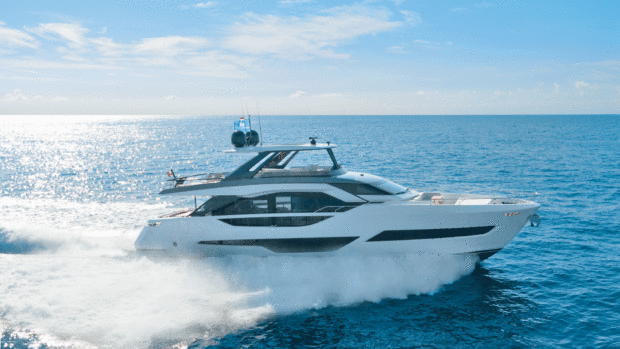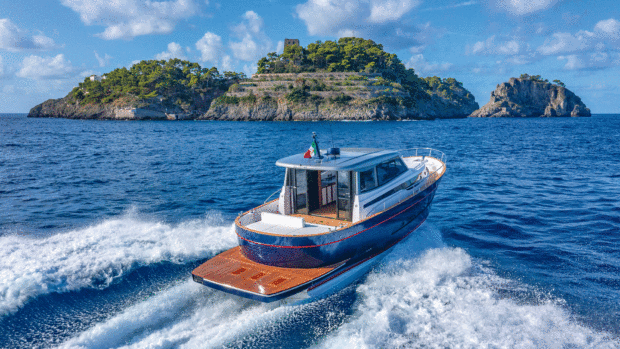Over the years here at Motorboat and Yachting, we’ve been lucky enough to sail some of the the most technically advanced and glamorous boats on the water. Whenever we get the chance to test out a new boat, we always bring our readers our expert opinion on how those boats behave. But what we have not really delved into before is how boats are built.
We sent Jack Haines off to the English midlands – about as far away from the sea as you can be in the country – to the home of Fairline Yachts to see exactly what goes into building some of the most technically advanced yachts in the world.
At the Oundle, Northamptonshire Fairline Yachts factory, they build everything in the range from the 33ft F-Line yachts right up to the Squadron 68 all built from the ground up across three separate factory buildings.

The Fairline Squadron 68 is just one of the yachts built at the Fairline Yachts factory in Northamptonshire
Going behind the scenes at the Fairline factory allows Jack to see how boats are built through every step of the process from the waxing of the moulds in the early stages of hull moulding and gel coat application, through to the layup of fibreglass and the resin infusion process.
Across the Fairline range, every boat is built with a liner. Though not a unique process for Fairline, not every manufacturer uses a liner in their construction. There are, essentially, two ways to make a boat. You can take the hull once it comes out of the mould and lay a flat, wooden floor into it and build the accommodation into the boat off that floor.
The other way of doing it is to have a liner. The liner is a structural part of the boat and provides significant rigidity into the hull itself.
The liner does limit what you can build in the interior of the boat, though, as you need to define where the bulkheads are going to go, where the rooms are going to go in the early design phase.
Once you have made that mould you are then committed to that layout. So it is a choice, essentially between customisation options and sea keeping and rigidity. We see this process in action and learn from Fairline just why they favour this technique as well as a great deal else about how to build a boat that is modern, luxurious and capable.









